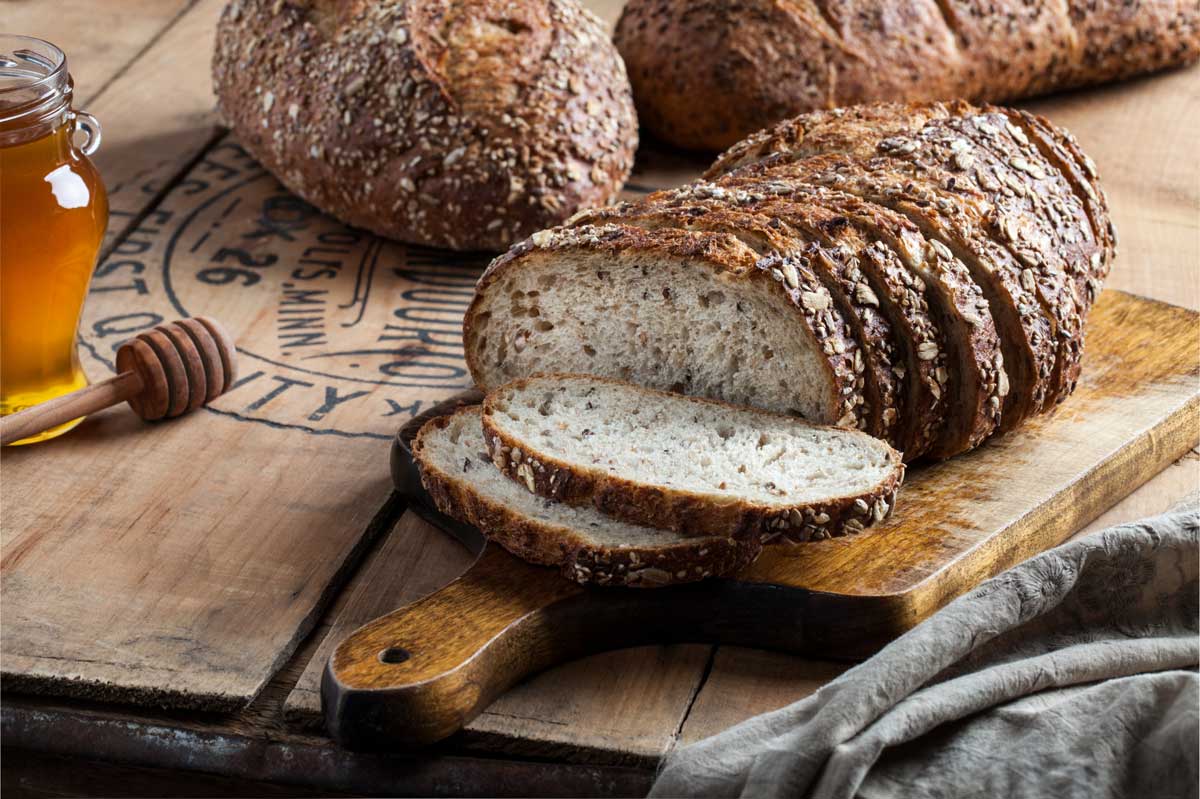Three-quarters of shoppers look for one or more specific ingredients when purchasing baked goods, according to “Power of Bakery 2019,” a new report from the American Bakers Association and Food Marketing Institute that is sponsored by Corbion. While whole grain and multi-grain are the most sought ingredients, the presence of vitamins, minerals and a growing array of functional nutrients appeals to nearly a quarter of all shoppers, particularly younger ones who want more from what they eat.
It’s no wonder bakers are increasingly giving their products boosts of extra nutrition, an effort known as fortification. This is not to be confused with enrichment, which refers to the addition of micronutrients depleted during processing. With both practices, bakers may encounter taste and stability challenges that need to be addressed early in the development process.
There are several approaches to effectively deliver extra nutrition. These include technologies that protect the nutrients, best practices for weighing and adding nutrients, and smart-blending systems. But, first and foremost, a baker should determine what nutrients to add and why. Is it to enhance nutrient content or make a health claim? Is it to comply with a standard of identity? Is it for a specific demographic known to be deficient in certain nutrients?
“Different age groups and lifestyles have different nutritional requirements, so it’s important to know who the target consumer is before developing a concept,” said Nathan Pratt, R.&D. scientist, nutrition, Kerry Ingredients. “For example, children need iron, calcium, vitamin A and vitamin D for optimal growth and development, but many kids do not get enough of these, so they are great candidates for fortification into foods kids eat frequently.”

Adding nutrients to baked foods increases costs; therefore, it is paramount that only the right ones in the most effective form be added to the formulation. You also want to make sure that addition fulfills a purpose.
“The fortified food should be consumed in quantities that will make a significant contribution to the diet of the population in need,” said Jasmine Monette, professional nutritionist and technical support manager, Lallemand Baking. “The baker needs to make sure that the addition does not create an imbalance of essential nutrients and that the nutrient is stable under proper conditions of storage and use.”
Vitamins, for example, are more sensitive to stress during the baking process.
“This means vitamins can lose some activity,” said Annette Bueter, product developer, SternVitamin. “Losses in activity can be compensated by adding overages, which means we are adding higher vitamin levels than what is required on the label of the final product. Minerals are less sensitive than vitamins, but they can have an impact on the sensory properties of the baked goods.”
Nutrient distribution and interactions must also be evaluated. The latter may change over shelf life and have a negative impact on taste and appearance.
“Differences in particle size may cause incomplete blending or segregation of nutrients,” said Mel Mann, director of innovation, Wixon. “Minerals such as calcium may disrupt bubble formation — gas leavening — during baking, resulting in lower rise. Bioavailability should also be considered. There may be solubility issues because of nutrient interactions.”
Encapsulation can delay or prevent interactions.
“In the end, it all depends on the levels and the combinations of micronutrients in the final product,” Ms. Bueter said.

Historically, fortification was all about adding vitamins and minerals to everyday foods to prevent deficiencies that can lead to disease. This has evolved to include adding nutrients to help the body function at its best.
“Bakers who fortify their products have an opportunity to create functional foods that provide broad nutritional benefits, or they can reach into highly desirable niche food markets by developing products tailored to specific health conditions,” said Laura Tagliani, director of science and compliance, Quintessence Nutraceuticals.
Markets like bakery and snacks that have matured often start to converge into different segments as companies differentiate their products and gain consumer attention, observed Sam Wright, chief executive officer of The Wright Group.
“Segments can be based on age, gender, lifestyle considerations, health conditions or even time of day,” he said. “The permutations are endless, and each segment would require a different combination of nutrients to support the market positioning.”
Take calcium fortification.
“This is important for healthy development in children, as well as necessary for maintaining bone health throughout adulthood,” said Matt Patrick, technology, applications research and technical services, Delavau Bakery Partners by SafPro.
Adding nutrients to baked foods increases costs; therefore, it is paramount that only the right ones in the most effective form be added to the formulation.
This bone-building nutrient is not inherently present in grain; however, varied grain-based foods are commonly consumed by the demographics that need calcium. Young children, for example, eat breakfast cereals and snack crackers. Adding calcium for bone development can round out these products.
While older children and young adults would also benefit from calcium, their nutritional needs and diets are different. This demographic gravitates toward portable bars and may benefit from protein and even a dose of caffeine for an afternoon energy boost.
Keep in mind the Food and Drug Administration does not require fortification or enrichment for any food product; however, for products described as “enriched,” there is a standard of identity that must be maintained.
Flour is one of the most commonly enriched and fortified food ingredients. In the United States, the Code of Federal Regulations specifies the exact amount of five nutrients — folic acid, iron, niacin, riboflavin and thiamin — that must be added to enriched flour and provides specifications for other optional nutrients. Other countries have their own fortification specifications based on the nutritional needs of the population.
“When wheat is milled, the bran and germ from the wheat kernel are removed, and the endosperm is processed into white flour, stripping certain vitamins and minerals,” said Cary Efurd, national sales manager, Corbion. “Flour enrichment adds those back, restoring essential nutrients that are lost during processing to meet mandatory regulations.

“When adding vitamins and minerals at the milling level, consistency is key,” he continued. “There are certain variables at the mill to overcome in order to meet the minimum requirements and guidelines for flour enrichment outlined by the F.D.A.”
This is where premixes are useful. Suppliers carefully combine micronutrients at specified levels to ensure the quantified dosage is delivered to the consumer through the end of the product’s shelf life.
“Premixes generally come from suppliers skilled in manufacturing and verification of content, including overages needed to account for losses from baking and shelf life,” Mr. Mann said.
Premixes also are pre-portioned to prevent nutrient imbalance and ease-of-use.
“In the premixes, the level of vitamins and minerals are pre-portioned according to the ratio of daily nutrient requirement,” Ms. Monette said.
Even with premixes, however, there can be taste and texture challenges.
“Flavor challenges can be overcome through techniques like encapsulation and flavor-masking,” Mr. Patrick said. “Overcoming textural challenges usually requires physical manipulation of the particle involved.”
For example, Lesaffre Yeast Corp. has overcome calcium fortification challenges through patented technology that uses calcium carbonate at a specific particle size together with solubility manipulation.
It’s important to consider how much of each nutrient will be present in each serving because marketers cannot control how much product a consumer will eat in one sitting. Sensible fortification practices must be employed to protect consumers from over-indulging.
“All vitamins and minerals have a daily requirement that we need to make sure to get enough of, as well as an upper limit we should not exceed,” Mr. Pratt said. “For example, the daily recommendation for vitamin D is 15 micrograms per day for most adults. The upper limit is 100 micrograms per day. Smart, safe addition levels would be 10% to 20% of the daily value of a nutrient per serving. Remember, people eat many different foods over the course of a day, so they do not need to get all their nutrient requirements from one food at one setting.”
This article is an excerpt from the July 2019 issue of Baking & Snack. To read the entire feature on fortification, click here.




